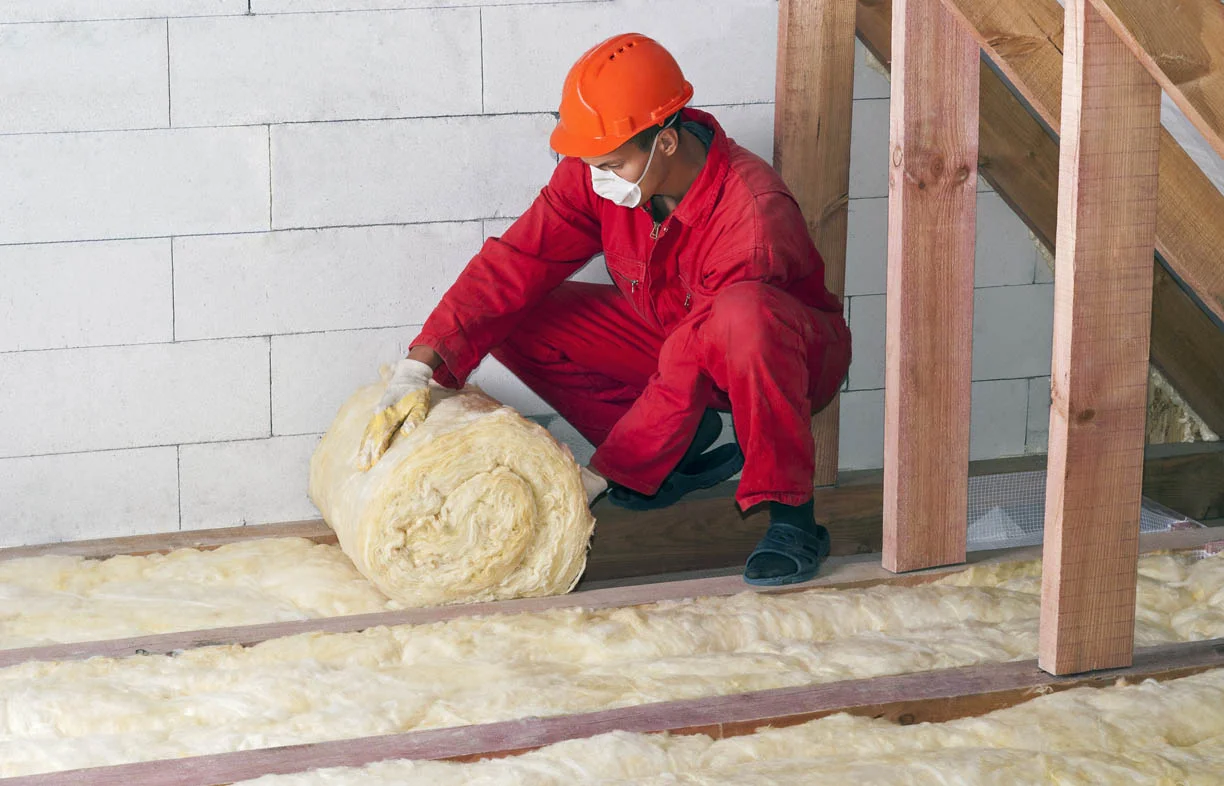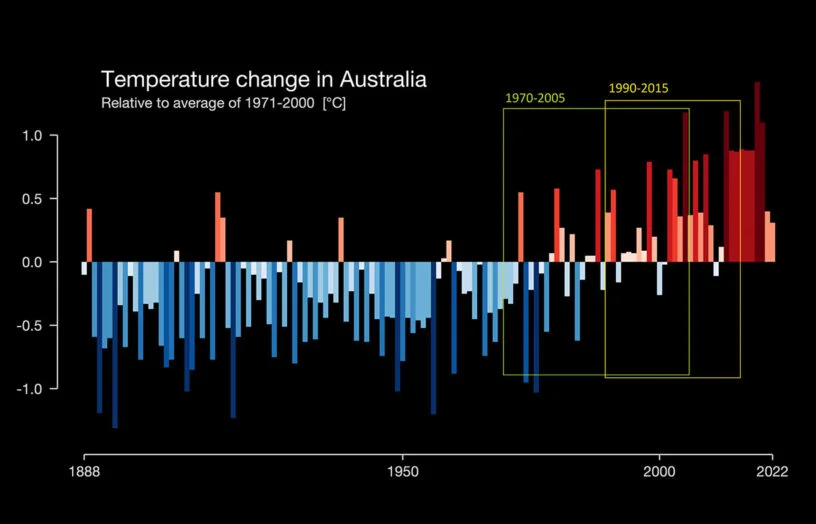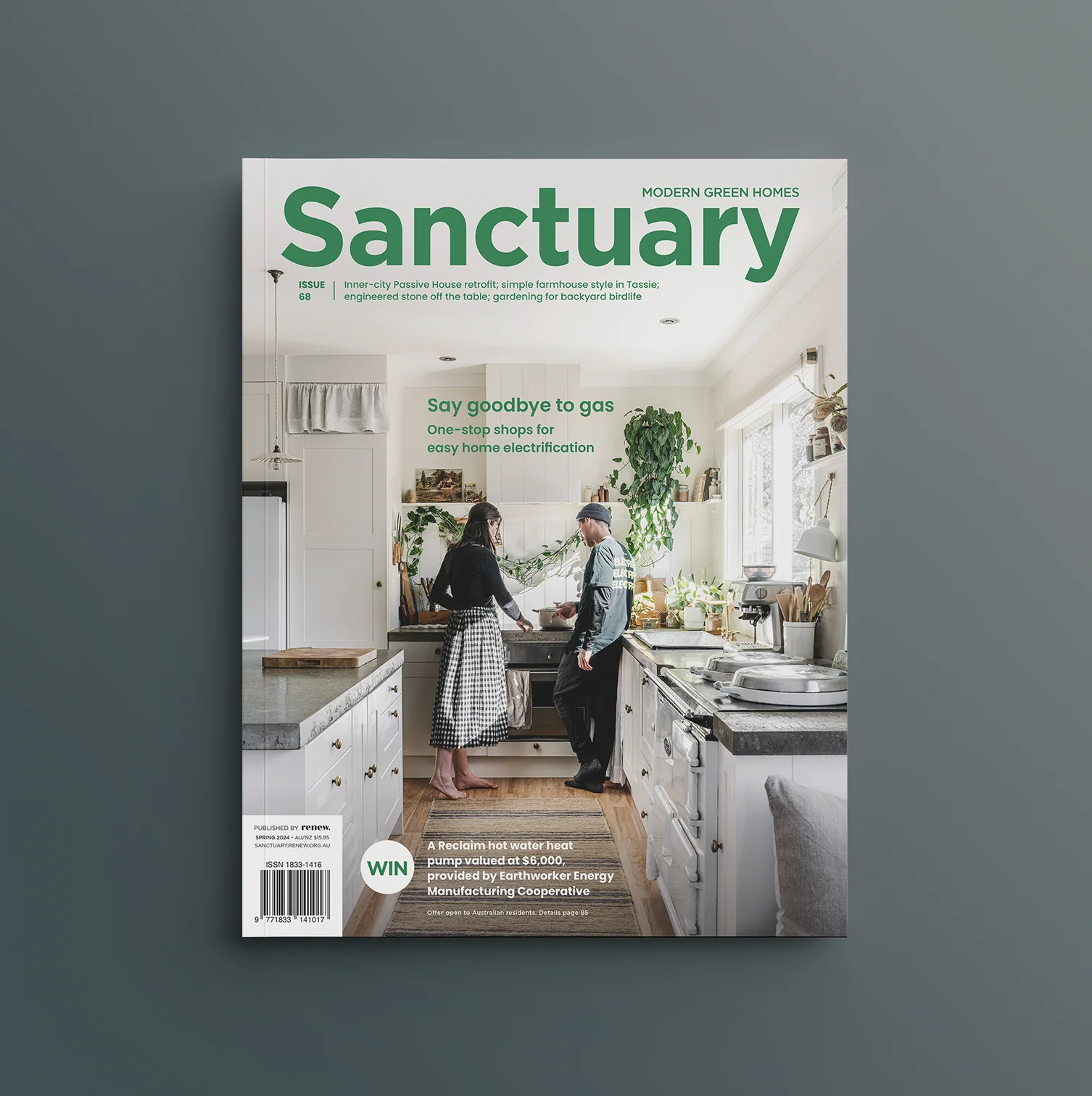The key to thermal performance: Insulation buyers guide

Is your home hot in summer and freezing in winter? It probably has little or no insulation. Lance Turner takes a look at how insulation can help.
This article was first published in Renew 140 (July – September 2017).
Insulation, like orientation, is often overlooked by householders, perhaps because it’s not on display, hidden as it is in the ceiling, walls or underfloor. You may not be able to see it, but, in most homes, you can feel its presence, or absence. Insulation is key to providing a liveable home when the weather cools down or heats up, without breaking the bank on energy costs.
Insulation works by resisting the flow of heat, slowing down heat loss in winter and heat gains in summer. In a well-insulated home, once the home has been heated to a comfortable level in winter, it will stay warm with far less energy input than an uninsulated or poorly insulated home would require.
The same applies in summer: a properly insulated home will take longer to heat up and, if an air conditioner is used, it will use less energy than one cooling an uninsulated house. One summer-time caveat: any windows that receive direct sunlight need to be shaded, particularly west windows, as insulation can slow the ability of the house to cool down if there are large heat gains from windows.
Heat transfer and insulation
There are three ways that heat is transferred to or from a building: conduction, convection and radiation (and through gaps, of course, but draughtproofing is outside the scope of this guide).
Conduction is the transfer of heat through a substance, in this case the walls, floor and ceiling of a house. The type of insulation used to reduce conductive heat transfer is known as ‘bulk’ insulation.
This is the most common home insulation and may be in the form of fluffy ‘batts’ or ‘blankets’ made of materials such as polyester, glass or mineral wool or sheep’s wool. Bulk insulation may also use a loose-fill material, which is pumped into the roof or wall cavities and sealed with a spray-on cap. All these materials are poor conductors of heat and so reduce the rate of heat flow, provided they are installed correctly.
Convection heat transfer—heat transferred through the circulation of air—is the undoing of many insulation jobs. Circulating air can pass between poorly installed insulation materials and thus transfer heat into or out of the house, vastly reducing the effectiveness of the insulation.
Radiation is a different type of heat transfer. All warm objects radiate heat in the form of infrared radiation. This heat can be reflected back to where it has come from using reflective foil insulation, so that heat loss or gain through radiation is greatly reduced.
Reflective surfaces such as foil don’t just reflect, they also have low emissivity—the ability to emit radiation, or heat in this case. This means heat that has entered the material from the non-reflective side is not emitted from the reflective side easily. Thus, foils work to reduce heat flows in both directions, even if only one side of the material is reflective.
Download the full buyers guide tables listing insulation suppliers and their products here.
Read the full article in Renew 140.
This article was first published in Renew 140 (July – September 2017). Issue 140 has a focus on all-electric homes, with how-tos, economic analysis and case studies.
Related articles
 Efficient homes
Efficient homes
Building for a changing climate
Are we building homes for the future, or for the past? Rob McLeod investigates how climate change is impacting home energy ratings and the way we build our homes.
Read more Reuse & recycling
Reuse & recycling
Recycled hydronic heat
Renew’s sustainability researcher Rachel Goldlust gives us a view of and from the Salvage Yard.
Read more Efficient homes
Efficient homes
Getting off gas FAQs
Do heat pumps work well in Australian conditions? Rachel Goldlust explains.
Read more
